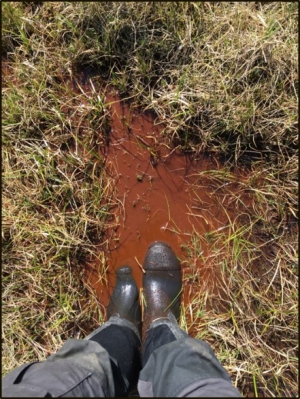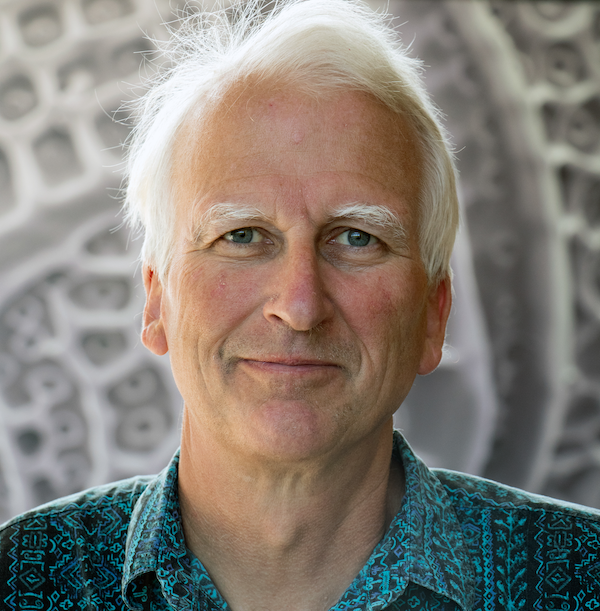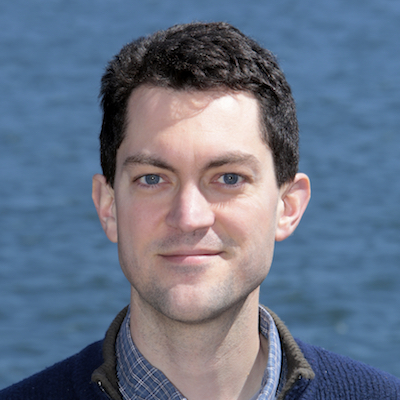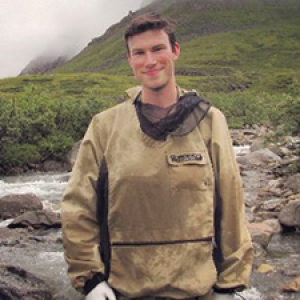Project Abstract
 There is great concern about changing conditions in the Arctic due to environmental transformations that are impacting tundra and its underlying permafrost. At the same time, there are major gaps in our understanding of tundra/permafrost microbiology and elemental cycling. Filling these knowledge gaps will enable a better overall understanding of the tundra, and can provide crucial information about how this globally important, but fragile ecosystem will respond to change. The particular knowledge gap this research will fill centers around iron and the bacteria that control its availability. Iron is an essential micro-nutrient for animals, plants, and microbes. It also serves as a growth substrate for certain groups of bacteria, many of which fix carbon dioxide to grow. Some of these bacteria directly compete with other groups of microbes that produce or consume methane, the atmospheric concentration of which is continuing to increase. It is particularly important to understand the dynamics of carbon dioxide and methane in the Arctic because there is a large amount of organic carbon stored in permafrost that could be converted into these two gases. The research team consists of a microbial ecologist with considerable experience in iron cycling bacteria, a mathematical modeler who will quantify the relative impacts of different microbial processes, and a tundra ecologist with extensive experience in elemental cycling in permafrost environments. This project will, for the first time, systematically characterize and quantify microbial communities responsible for iron cycling in the tundra/permafrost of Alaska's North Slope, and increase our understanding of how these microbes interact with the carbon cycle by suppressing methane production.
There is great concern about changing conditions in the Arctic due to environmental transformations that are impacting tundra and its underlying permafrost. At the same time, there are major gaps in our understanding of tundra/permafrost microbiology and elemental cycling. Filling these knowledge gaps will enable a better overall understanding of the tundra, and can provide crucial information about how this globally important, but fragile ecosystem will respond to change. The particular knowledge gap this research will fill centers around iron and the bacteria that control its availability. Iron is an essential micro-nutrient for animals, plants, and microbes. It also serves as a growth substrate for certain groups of bacteria, many of which fix carbon dioxide to grow. Some of these bacteria directly compete with other groups of microbes that produce or consume methane, the atmospheric concentration of which is continuing to increase. It is particularly important to understand the dynamics of carbon dioxide and methane in the Arctic because there is a large amount of organic carbon stored in permafrost that could be converted into these two gases. The research team consists of a microbial ecologist with considerable experience in iron cycling bacteria, a mathematical modeler who will quantify the relative impacts of different microbial processes, and a tundra ecologist with extensive experience in elemental cycling in permafrost environments. This project will, for the first time, systematically characterize and quantify microbial communities responsible for iron cycling in the tundra/permafrost of Alaska's North Slope, and increase our understanding of how these microbes interact with the carbon cycle by suppressing methane production.
The basic supposition of this research is that conditions in the Arctic are beneficial to an active iron cycle because the shallow depth permafrost prevents ferrous iron-laden waters from percolating into deep aquifers (a common route for iron removal from temperate ecosystems). Furthermore, cool water temperatures slow the chemical oxidation of iron, and a short, but intense growing season provides a source of labile carbon that helps fuel iron reduction. These ideas will be tested by conducting field and laboratory studies at the Toolik Field Station on the North Slope of Alaska. Previous work has revealed there are extensive populations of iron-oxidizing and iron-reducing bacteria associated with microbial iron mats in this region, but in general, little is known about their diversity or function. This work will utilize cultivation-independent, amplicon-based community analysis and metagenomics to further characterize community diversity and function among these chemosynthetic communities. The team will measure methane production at tundra sites with high rates of iron cycling and compare these to sites that are similar in terms of hydrology and landform, but have lower rates of iron-cycling to assess the direct impact of the iron cycle on methane production and consumption. The microbiomes of these sites will also be compared using molecular analysis. In addition to these field measurements, the researchers will construct a laboratory microcosm that can be seeded with soils and microbial iron mats collected from Toolik. This will allow controlled conditions to simulate interactions of the iron and methane cycles under conditions where key parameters such as iron and oxygen concentrations can be controlled. From both field and laboratory data, a reaction-based model will be developed using a series of kinetic equations. These will form the basis for a predictive model that can estimate the suppressive effects of iron cycling on methane production. In terms of broader impacts, the work will provide unique opportunities for training undergraduate and graduate students, as well as a postdoctoral researcher, in combining field, laboratory, and modelling-based science to fill an important gap in our knowledge of the tundra ecosystem. To broaden public outreach, two artists will be engaged to create a unique art-science dialog that will broaden the interpretation of the project results and provide museum quality creative work that can be displayed in either science or art exhibits.
Logistics Summary
This collaborative project between Emerson (1754358, Bigelow) and Bowden (1754379, UVM) will explore the role a unique group of bacteria play in controlling the biogeochemical cycling of iron in an Arctic tundra ecosystem. It will investigate linkages between the iron cycle and other major biogeochemical cycles in the context of how these interactions could be affected by climate change. This three-year project will have two field seasons (2019 and now 2021) at Toolik Field Station in Alaska. In each year a field team of six will work out of Toolik Field Station. Efforts will take place within an approximate time window between 15 June and the last week of July for year 1, and from approximately 1 July to the 2nd week of August in year 2. These efforts are based on earlier monitoring with mid-June being the time when Fe-cycling communities were starting to be observed, and mid-August being the time when the first freeze-ups occur and the ecosystem is becoming less active.
Toolik Field Station worked very hard to accommodate remote sampling during the 2020 field season. While we didn't get a full field season, the staff was able to provide some samples that will allow us to keep working on an aspect of our project over the winter. Their effort allows us to keep momentum moving forward on our project. Thank you, Toolik Field Station staff!
Season Field Site
2019 Alaska - Toolik
2021 Alaska - Toolik
Keywords
microorganisms, iron, methane, active layer, permafrost, microbial community
Project Location
Dates
-Location
Toolik, AKMembers
Principal Investigator

Co-Principal Investigator

Principal Investigator

PostDoc

Graduate Student

